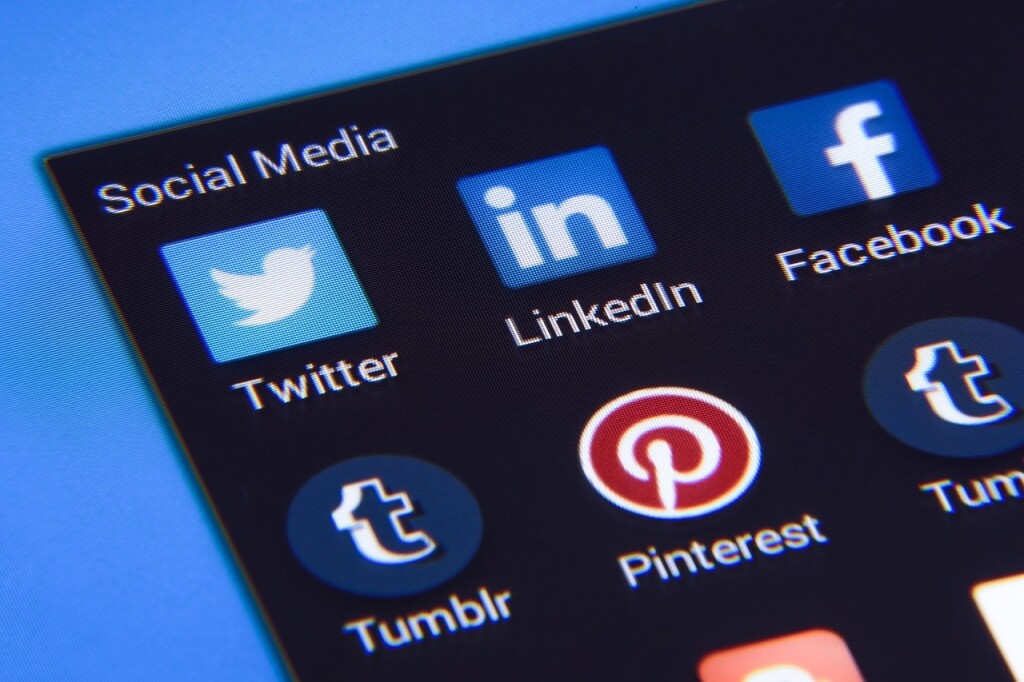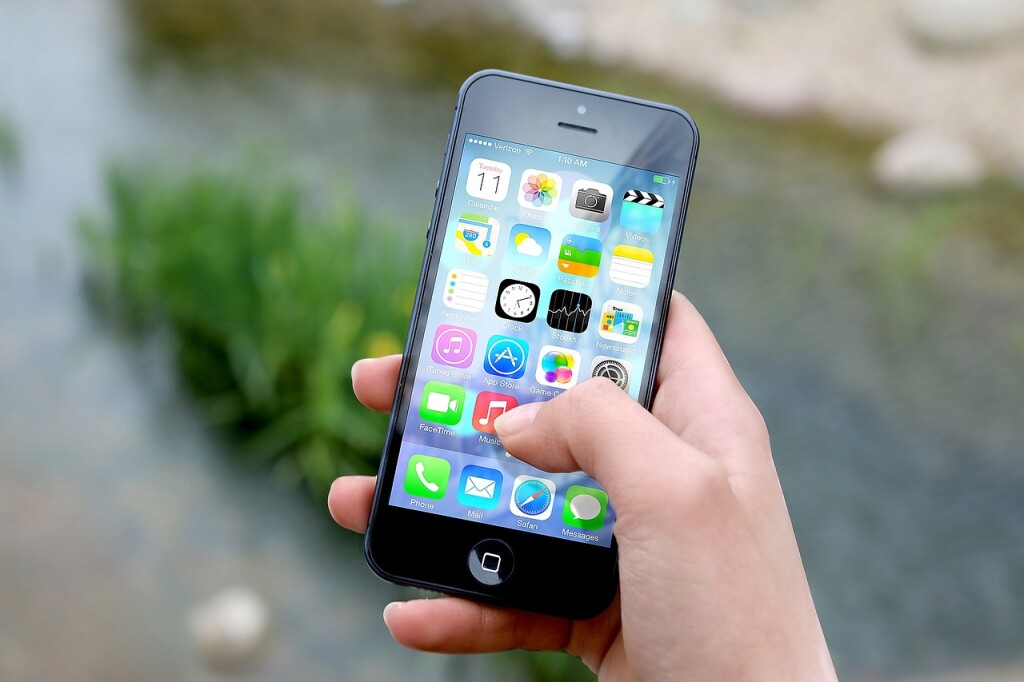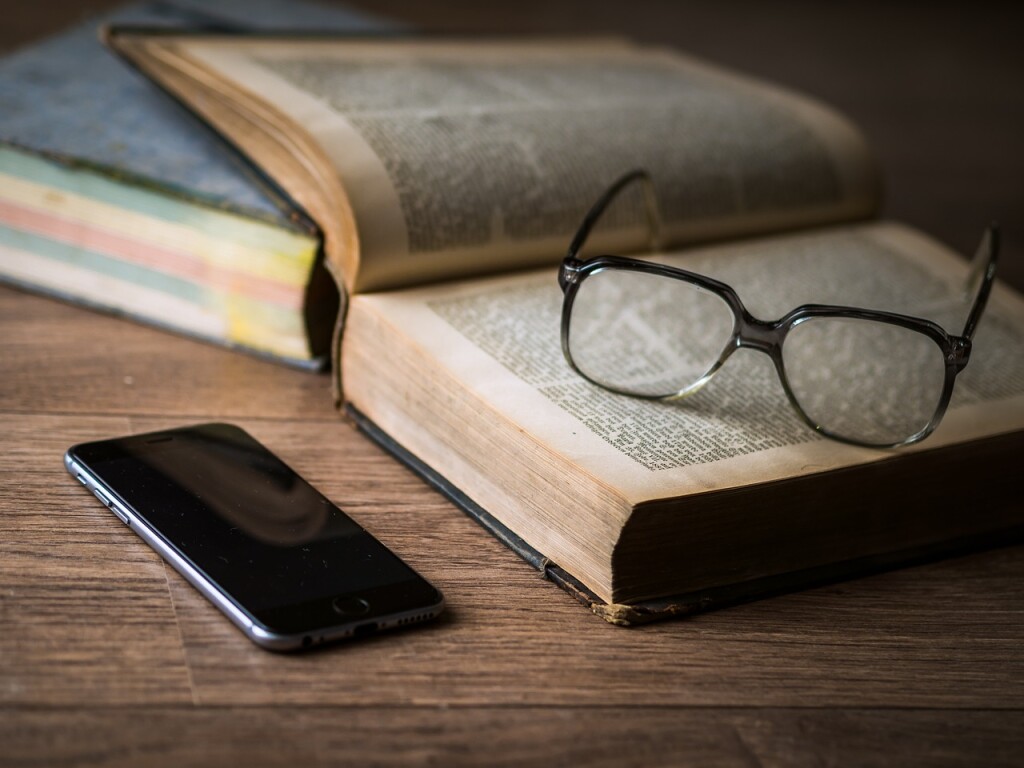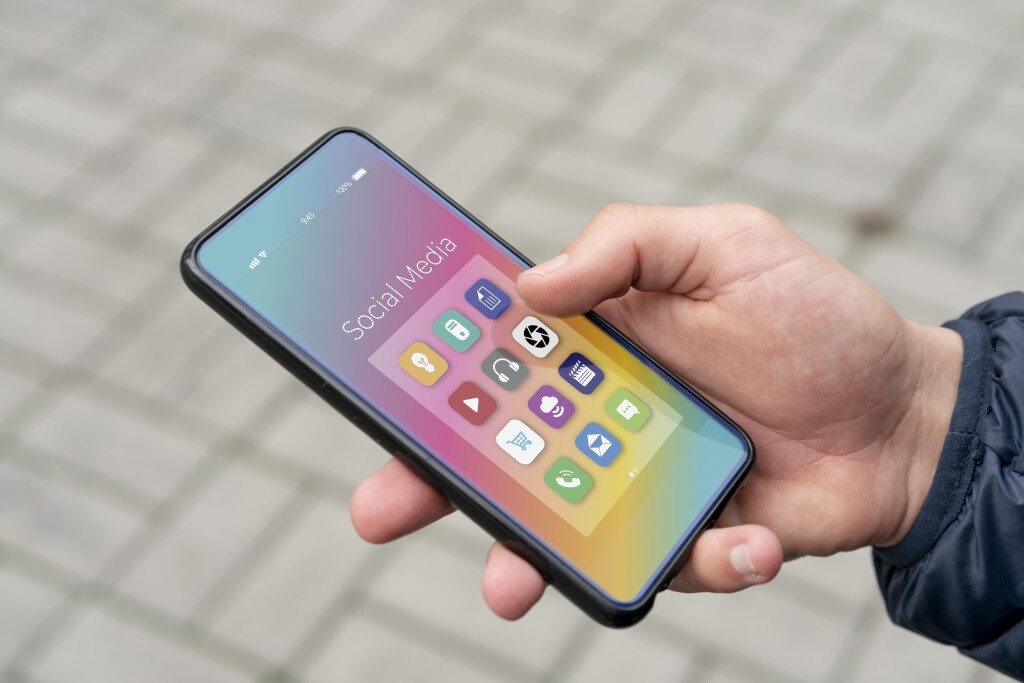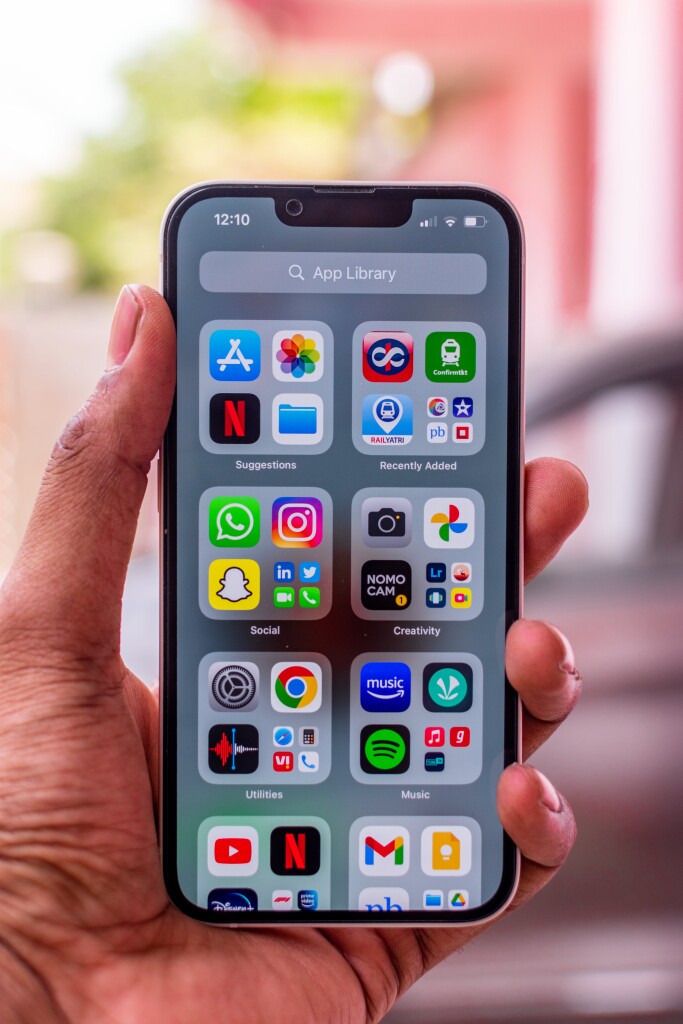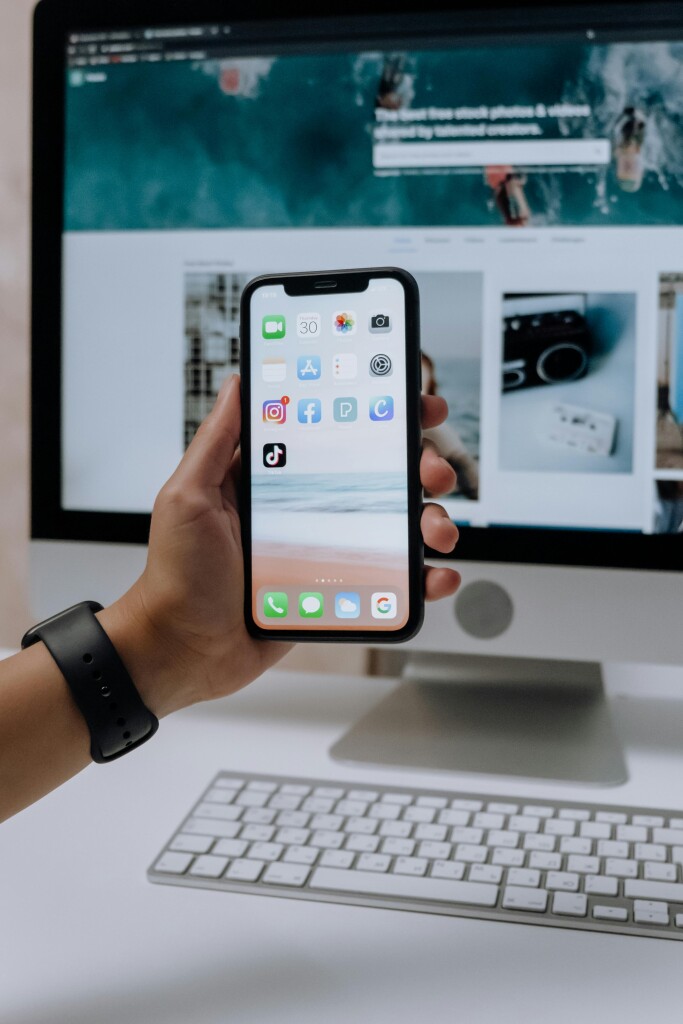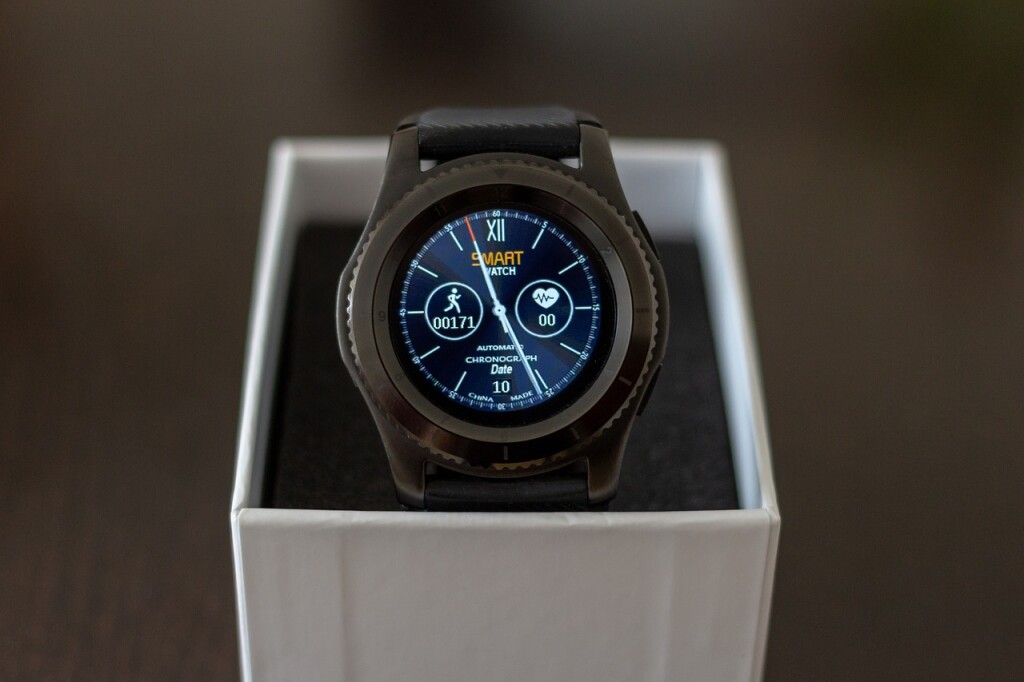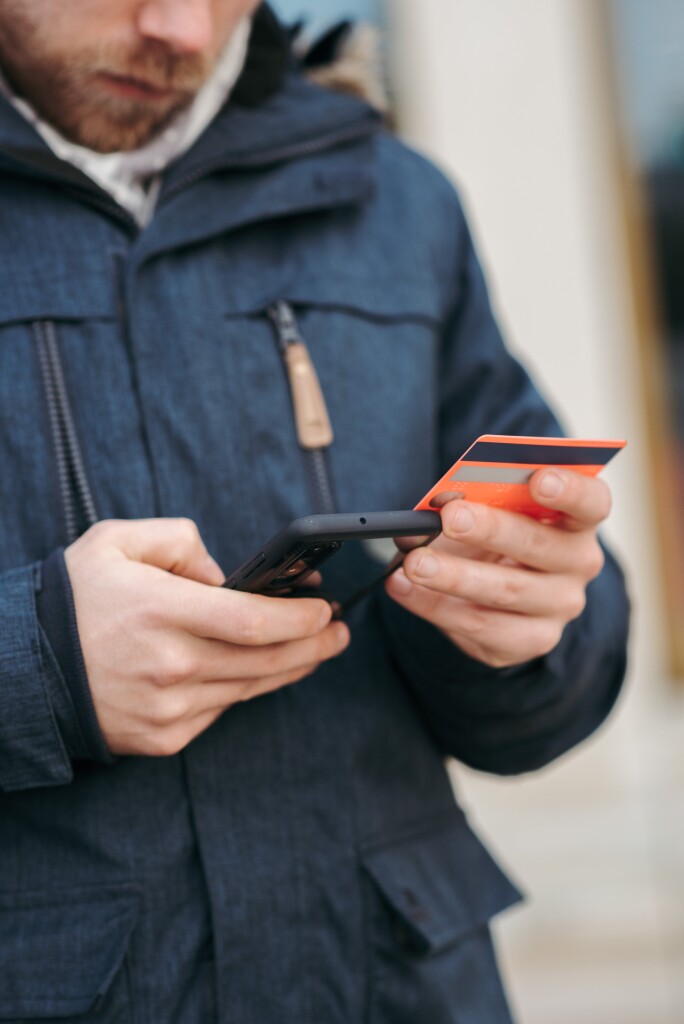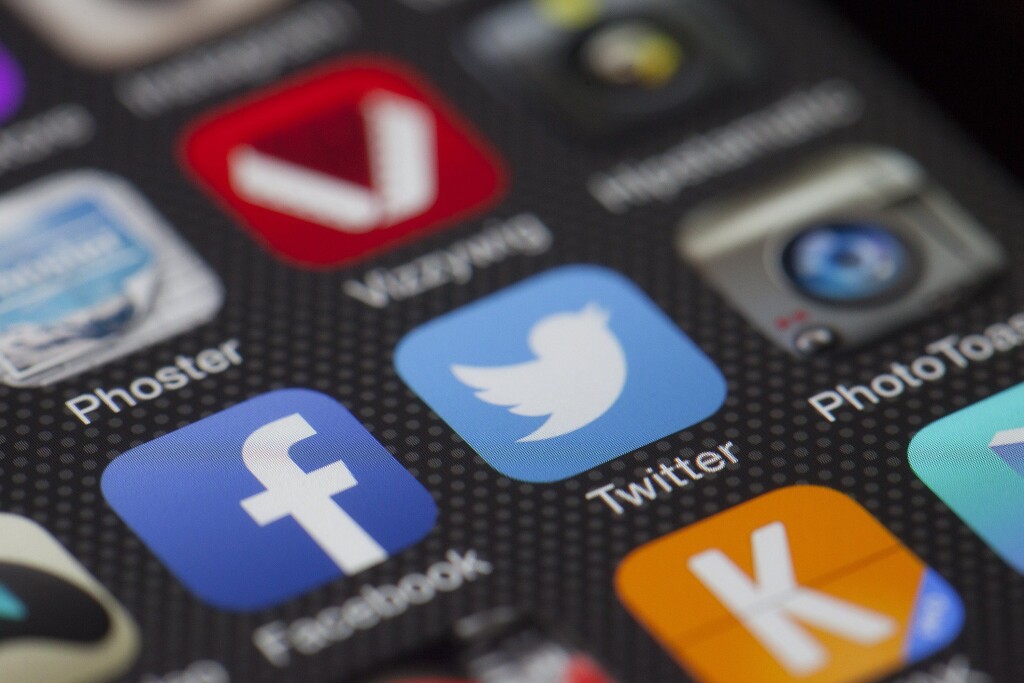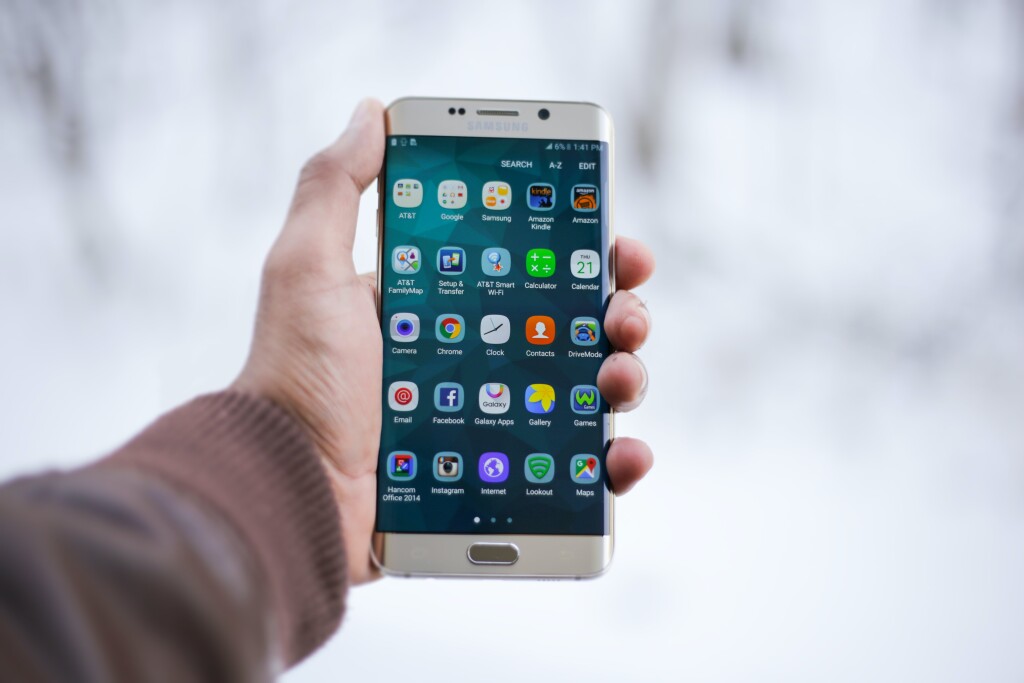Archives for January 2024
Caci Apps: What You Need to Know
introduction
Have you heard about Caci apps? If not, you’re in for a treat. These specialized apps are designed for people dealing with chronic illness or pain. Do fibromyalgia, arthritis, migraines, or other conditions live with you? Caci apps can help make your life a little bit easier. They provide tools for symptom tracking. They offer support communities and suggest lifestyle hacks tailored to your needs. Some even connect you directly with doctors or nurses. The best part is many of these apps are free or low-cost. While health issues can’t be solved by technology, technology can provide resources to empower you. So, check out some of the top Caci apps and find ones suited to your unique situation. Your health and well-being are worth it.
What Are Caci Apps?
Caci apps are a new class of mobile apps. They’re called “context-aware collaborative interfaces.” They’re designed to provide personalized experiences based on your location and activity. These apps use your phone’s GPS, accelerometer, and other sensors to determine your location. They also determine what you’re doing. Then, they provide recommendations and features tailored to your current context.
For example, when you’re in a park, a CACI fitness app may suggest nearby hiking trails. It may also offer workout routines tailored to the gym equipment it sees you using.A Caci travel app could point out popular restaurants or attractions based on your current location. Caci apps aim to anticipate your needs. They streamline tasks by understanding your environment and behavior.
- Location-based: Detect your geographic location using GPS and wifi triangulation. Provide recommendations for places or events nearby.
- Use motion sensors, like accelerometers and gyroscopes, to determine your activity. These sensors can tell if you’re walking, biking, driving, or being still. Offer features suited to your activity—for example, turn-by-turn walking directions vs driving directions.
- Personalized: Learn your preferences and habits over time to provide increasingly tailored suggestions. For instance, if you frequently get coffee in the morning, a Caci app may point you to nearby coffee shops.
- Sense aspects of your environment, like light levels and sound. Also, sense your proximity to landmarks or businesses. Determine the appropriate feature or information to display based on the overall context.
- Some Caci apps crowdsource data from multiple users. They use it to identify popular spots or events. They can then recommend places that are trending in your area.
Caci apps aim to transform your mobile experience. They do this by understanding where you are and what you’re up to. Caci apps are an emerging field. They promise to become far more intuitive. They will also be integrated into our daily lives in the coming years. The future is contextual and tailored to you.
Top 5 Caci Apps to Try
There are so many great apps out there for Caci owners, that it can be hard to choose. Here are our top 5 recommendations to get you started:
Caci Connect
This is Caci’s official app. It lets you connect directly to your Caci and control it remotely. You can check its battery level, change modes, see its location on a map, and more. It’s free to download and a must-have for any Caci owner.
Caci Tips
This app provides helpful tutorials and how-tos for getting the most out of your Caci. Learn the best charging practices, and how to properly care for your Caci and keep it running well. Troubleshooting guides help diagnose any issues. Caci Tips is highly rated and free.
Weather Channel App
The Weather Channel app lets you see detailed weather information and forecasts. They are customized for your Caci’s location. Know if there’s rain or snow in the forecast so you can take your Caci out prepared. Weather alerts warn you of hazardous conditions, like high winds. They could impact safe Caci operation.
AllTrails
For Caci owners who enjoy exploring the outdoors, the AllTrails app is ideal. It provides information on thousands of trails suitable for Caci riding. You can filter by difficulty, trail traffic, scenery, and more to find the perfect route. Trail guides give you details on distance, estimated time, and points of interest along the way. AllTrails does cost $30/year for the premium version with the most features.
TripAdvisor
When you’re ready to venture further with your Caci, check out nearby points of interest, restaurants, hotels, and activities on TripAdvisor. Read reviews from other Caci riders to find Caci-friendly destinations. You can even post your reviews and photos from your Caci adventures. TripAdvisor’s app is free to use.
These useful apps are at your fingertips. They will help you discover all the possibilities of Caci ownership. You’ll also build amazing memories that will last for miles. Safe and happy riding!
Benefits of Using Caci Apps
Caci apps are super helpful for people and businesses. They bring lots of good things. For you, it means easy and fun stuff on your phone. Like games or tools that make life simpler. For businesses, Caci apps help them do things better and faster. Imagine quick ways to keep track of stuff or talk to customers. It’s like having a handy friend in your pocket. So, if you want easy and cool things, Caci apps are the way to go. They make life better for everyone!
Convenience
Caci apps allow you to access tools and resources on the go. The apps make it easy to check your schedule. They also make it easy to contact a client or look up information from your mobile device. No more lugging around heavy books or waiting until you’re back at your desk.
Increased Productivity
Caci apps streamline common tasks and put information at your fingertips. You can get more done in less time. Mobile check-in, digital documentation, and mobile payments minimize time-consuming paperwork and admin. You can spend less time on routine tasks and more time focusing on priorities.
Improved Experience
Caci apps want to make things super easy for you! They’re like your helpful friends on your phone or computer. These apps are designed to be really simple to use – no confusing stuff! The buttons and menus are easy to understand, and you can find what you need without any trouble.
The cool part is that these apps are always getting better! The tech wizards behind the scenes are always updating the apps. They make the apps work even better and do more cool things. They’re like magic upgrades that happen without you even noticing.So, you can enjoy using the apps without any worries. (Already in active voice) It’s all about making your tech experience awesome and not confusing at all!
Data-Driven Insights
Many Caci apps tap into data and analytics to provide actionable insights. Customized reports, predictive analytics, and smart recommendations help you make better-informed decisions. You gain a data-driven edge that can positively impact key outcomes. (Already in active voice)
Enhanced Collaboration
Caci apps help you work easily with friends and people you work with. You can use shared calendars, tools for managing projects, and video calls.Additionally, there is the option to securely share files, facilitating seamless collaboration and coordination regardless of geographical constraints. These applications also streamline task delegation, information sharing, and remote work. When individuals effectively collaborate, positive outcomes are bound to occur.
How Caci Apps Work
Caci apps use augmented reality. They place virtual objects, characters, and scenes in the real world around you. All you need is a smartphone or tablet with a camera. Many caci apps are free to download and use. Nevertheless, a few provide the option of in-app purchases to access supplementary material.
To get started, download a Caci app like Candy Camera, Anthropic PBC, or Zombie Snapchat Lenses. After installation, proceed to launch the application and then position your device’s camera in an upright position. The app will detect surfaces and empty spaces in your environment. It will allow you to place various digital stickers, filters, and lenses over the live camera view.
Placing objects
After installation, proceed to launch the application and then position your device’s camera in an upright position. Move and rotate it with your finger to put it where you want. Scale or resize the item by pinching in and out. Many items can be posed or animated to interact with people and objects in your environment. Get creative with virtual decorations, characters, animals, vehicles, and more.
Capturing photos and videos
Once you have arranged the virtual items to your liking, simply tap to capture a still photo or hold to record a video. Your creation will then be saved in your camera roll, enabling you to view, edit, and share it just like any other photo or video. Additionally, numerous Caci apps offer the convenience of directly sharing your photos and videos to social media platforms from within the app itself.
In-app purchases
Many items in the Caci app are free to use. However, some apps offer additional themed packs or character packs for purchase. Some also sell virtual item bundles. These optional in-app purchases allow you to unlock more creative tools and content. Purchase prices typically range from $0.99 to $9.99.
Caci apps are an easy, fun way to augment your reality. They also let you get creative with photography and videography. You’ll be crafting awesome virtual scenes with a little practice in no time. Let your imagination run wild and see what you can create!
Getting Started With Caci Apps
Using Caci apps is simple! First, learn the basics. Setting up Caci apps is easy. They provide helpful tools for getting things done, talking with others, and much more. Enjoy improved productivity and communication effortlessly with Caci apps. Start today and see how easy it is to make your tasks simpler and more enjoyable!
Downloading the Apps
The first step is to download the Caci apps you want to use. You can find all the Caci apps in the app store on your mobile device or computer. Some of the most popular Caci apps are:
- Caci Mail – An email app that syncs with your existing email accounts.
- Caci Calendar – A calendar app that allows you to create and share events, set reminders, and more.
- Caci Docs – A word processing, spreadsheet, and presentation app. Much like Microsoft Office but free to use and compatible across devices.
- Caci Meet – A video conferencing app for online meetings, video calls, and webinars.
Once you’ve downloaded the apps, open each one on your device and follow the prompts to sign in or create an account. Caci accounts are free to set up and your data and account sync across all the Caci apps.
Learning the Basics
The Caci apps have a simple and intuitive interface, but it still helps to know the basics. Spend some time exploring each app and try creating a test document or event. Some things you’ll want to know how to do:
- How to create, save, and edit files like documents, spreadsheets, and presentations.
- How to schedule and manage events in the calendar.
- How to compose, reply to, and manage emails in Caci Mail.
- How to start or join a video call in Caci Meet.
Caci apps work similarly across mobile and desktop. Once you learn the basics, you will be able to use the apps efficiently on any device. If you get stuck, check out the help center which has guides to get you up and running in no time.
With some practice, you’ll be able to use Caci apps to boost your productivity and connect with others. These essential tools are free.
They are also friendly for users, and they are designed to simplify your digital life. Best of all, you can use them for free.
Conclusion
So there you have it, caci apps have everything you need to know to get you started. Caci apps have you covered if you want to improve focus, relieve stress, or just enjoyably kill some time. The variety of options means there’s something for everyone. Give a few a try, see what works for you, and don’t be afraid to experiment. You might just stumble upon your new favorite activity. If you make these bite-sized brain exercises a habit, you’ll shape up those neural pathways in no time. Your brain will thank you, and you’ll be reaping the benefits before you know it. So why are you waiting?? Start tapping and swiping — your mental muscles will be flexing in no time.
how to delete apps? : A Beginner’s Guide
Introduction:
Have you ever looked at your phone and wondered how it got so cluttered with apps? You start with the basics, the essential tools you need to stay connected and productive. Then one day you find yourself with pages and pages of apps, many of which you barely recognize or remember downloading. Your phone which once felt streamlined now seems bogged down by the sheer volume of icons and options. The good news is, that it’s easy to do a little spring cleaning and delete apps you no longer use. We’ll walk you through how to delete apps on both iPhone and Android so you can declutter your device and get back to the simple, minimal phone experience you crave. Time to do some tidying up!
Why You Should Delete Apps You Don’t Use
Why should you delete apps you no longer use? There are several good reasons to declutter your device by removing unused apps.
Free up storage space
Apps take up space on your phone or tablet, even when you’re not using them. The more apps you have, the more storage they consume. By deleting apps you no longer open, you free up space for new apps, photos, videos, and software updates.
Improve performance:how to delete apps
The more apps on your device, the more it has to manage. This can slow down your phone or tablet and reduce battery life. Removing unused apps helps your device run more efficiently since it has fewer apps to keep track of.
Reduce security risks
Apps can potentially access your data, contacts, location, and more. The more apps you have, the greater the risk of privacy or security issues. Delete apps you no longer trust or need to minimize risks.
Simplify your device
A cluttered device filled with pages of unused apps can feel disorganized and overwhelming. Deleting unused apps declutters your device and makes the apps you use easier to find. Your device will feel fresher and less chaotic.
Stop annoying notifications:how to delete apps
Apps frequently send notifications to try and re-engage you. By deleting unused apps, you avoid getting notifications from apps you no longer care to use. Your notification center will become less cluttered and distracting.
In summary, deleting unused apps on your mobile device has significant benefits with virtually no downside. A decluttered, streamlined device will run better, free up storage, reduce security risks, and simplify your digital life. Take some time to go through your app library and delete anything you no longer use – your phone or tablet will thank you!
How to Delete Apps on iPhone
Deleting apps you no longer use is a great way to free up storage space on your iPhone. Here’s how to delete apps:
How to Delete Apps on iPhone
To delete an app on your iPhone, press and hold the app icon until the apps start wiggling. This puts your iPhone into “edit mode” so you can manipulate the apps.
Once the app icons start wiggling, tap the “x” in the upper left corner of the app you want to delete. A message will pop up asking you to confirm that you want to delete the app. Tap “Delete App” to confirm.
The app icon will disappear from your home screen. Any data associated with that app may or may not be deleted, depending on the app. Some apps save your data even after deleting the app, while others wipe all data. Check with the app developer for details on their specific app.
To exit edit mode and stop the apps from wiggling, press the Home button or swipe up from the bottom of the screen.
A few other things to keep in mind:how to delete apps
• Deleting an app will not cancel any subscriptions you may have with that service. You need to cancel subscriptions separately by logging into your account for that service.
• Some apps come pre-installed on iPhones and cannot be deleted. These are usually apps made by Apple like Maps, Messages, Phone, etc.
• If you delete an app by mistake, you may be able to re-download it for free if it’s still available in the App Store. As long as you’re using the same Apple ID, your purchase history will allow you to re-download previously acquired apps.
• Consider offloading apps you don’t use often instead of deleting them. Offloading removes the app from your iPhone but keeps your data and documents, allowing you to re-download it at any time. Your data and documents will be put back onto your device when you re-download the offloaded app.
• Regularly deleting unused apps is a good habit to get into to keep your iPhone running smoothly and efficiently. A cluttered device with lots of unused apps can sometimes experience glitches or run more slowly.
Deleting Apps on Android Devices
Deleting apps on your Android device is easy! If there’s an app you don’t use anymore and want to get rid of, follow these simple steps. First, find the app icon on your home screen or in the app drawer. Press and hold the app icon until a menu pops up. Look for the option that says “Uninstall” or “Remove,” then tap on it. Confirm your choice if prompted. That’s it! The app is gone, freeing up space on your device. Keep your Android organized by removing apps you don’t need. It’s a quick way to tidy up and make your device run smoother!
Find the app:how to delete apps
The first thing you need to do is locate the app you want to delete. You have a few options for this:
· Go to your app drawer and scroll through the list of apps. When you find the one you want to remove, tap and hold on its icon until you see a menu pop up.
· Use the search function on your Android device to search for the app by name. Then tap the icon or name to select it.
· Go to the Settings menu, select “Apps & notifications” (or “Application manager” on some devices), then tap “See all
apps” to view a list of everything installed. Scroll and find the app you want to delete.
Tap “Uninstall” or “delete”
Once you’ve found the app, tap on its name or icon to select it. You should see options like “uninstall”, “delete”, or “remove” – tap that. This will prompt a confirmation message to ensure you want to delete the app.
Confirm the deletion
Tap “OK” or “Delete” to confirm you want to remove the app. The app and its icon will then disappear from your device. Any data associated with the app may also be deleted, so be sure you have backups of anything important before uninstalling.
Alternative: Use a third-party uninstaller
If for some reason the standard Android uninstall process isn’t working, you can try using a third-party app uninstaller tool. Some highly-rated free options include:
· CCleaner – A popular PC cleaner tool that also has an Android app uninstaller.
· AppCleaner – Deletes app leftovers and cache in addition to uninstalling apps.
· Uninstaller – Simple but effective uninstaller to bulk delete multiple apps.
Any of these can fully uninstall apps on your Android and clean up the leftover data and junk files. Give one a try if the usual way isn’t working for an app you want to delete.
Clearing App Cache and Data Before Deleting
Before you delete an app, it’s essential to clear its cache and data. This helps free up space on your device and keeps your information private. Clearing the cache means removing temporary files, making your device run smoother. Deleting data removes your personal information from the app. Both steps combined ensure that the app is wiped clean, creating more storage and protecting your privacy. So, remember, before saying goodbye to an app, take a moment to clear its cache and data for a tidy device and a secure digital experience.
Cache
The cache stores temporary data used by apps to run more. Over time, the cache builds up and takes up space. You’ll want to clear the cache of any apps you plan to delete.
To clear the cache of an Android app:
1. Go to Settings → Apps & notifications → See all → App info
2. Tap the app you want to clear the cache of
3. Tap Storage & cache
4. Tap Clear cache
For iPhone apps:
1. Go to Settings → General → iPhone storage
2. Tap the app you want to clear the cache of
3. Tap Offload App or Delete App, then tap Delete App
4. Reinstall the app to clear the cache
Data
App data includes things like login info, messages, files, and other personalized information stored by the app. Clearing app data will delete all of this info from your device.
To clear Android app data:
1. Go to Settings → Apps & notifications → See all → App info
2. Tap the app you want to clear data from
3. Tap Storage & cache → Clear storage
For iPhone apps:
1. Go to Settings → General → iPhone storage
2. Tap the app you want to delete data from
3. Tap Delete App, then tap Delete App again to confirm
4. Reinstall the app to clear the data
Deleting apps you no longer use is a great way to free up space and improve your phone’s performance. Be sure to first clear the cache and data of any apps you delete to safeguard your privacy and storage. how to delete apps Your device will run more efficiently as a result.
Reinstalling Deleted Apps Later On
So you deleted an app from your phone and now you’re regretting it. Don’t worry, reinstalling a deleted app is usually pretty straightforward. Here are the steps to get your app back:
Check your app store
First, open the app store on your phone – whether it’s the Apple App Store, Google Play Store, or another store. Tap the search bar at the top and enter the name of the app you want to reinstall. The app should appear in the search results if it is still available. how to delete apps Just tap to reinstall it for free.
Check your app library
If you can’t find the app in the app store, check your phone’s app library. On iPhones, open the App Store app and select the “Purchased” or “My Purchases” tab – it’ll show you a list of every app you’ve ever downloaded. On Android devices, open the Google Play app, select “My apps & games” and then “Library” – this shows you a list of installed apps as well as those you’ve downloaded in the past. Find your deleted app and tap to reinstall.
Check your app backup
If the app is no longer available in the app store or your library, you may still be able to restore it from a backup. On iPhones, check your iCloud backup – open Settings, select your name, and then ‘iCloud’ – if ‘iCloud Backup’ is turned on, you should see when your last backup was. You can tap ‘Restore Backup’ to restore your deleted apps. On Android, check your Google account for app backups – open Settings, select ‘Accounts’, and then your Google account. how to delete apps Tap ‘Manage backups’ to see if there are any app backups to restore.
Do some searching
As a last resort, you may need to do an internet search for your deleted app. Search for the app name along with terms like ‘old version’ or ‘download’ to find an archived version or alternative download link. Be very careful downloading apps from anywhere other than official app stores, as they may contain malware. But if done, searching around the web is a good way to find deleted or outdated apps.
In conclusion,
Deleting apps is an easy way to make your device work better for you. We’ve learned step-by-step how to do it in this beginner’s guide. how to delete apps By removing apps you don’t use, you free up space and help your device run smoother. Remember, go to your settings, find the apps, and choose to uninstall or delete them. It’s like cleaning up your room – getting rid of things you don’t need makes everything neater and faster. So, don’t be afraid to delete those apps and enjoy a more organized and efficient device!
apple smartwatch comparison: Which Model Is Right for You?
Introduction:
So you’re in the market for an Apple Watch, but can’t decide which model is right for you. There are a lot of options to choose from, and it can get confusing. Should you go for the high-end model with all the bells and whistles or stick to the more affordable version? Do you need the latest and greatest, or will an older model still get the job done?
This article will break down the key differences between the Apple Watch Series 6, SE, and 3. That way, you can determine which one best fits your needs and budget. We’ll compare specs like screen size, health tracking features, battery life, and pricing. We’ve got you covered if you’re looking for a smartwatch for fitness tracking, messaging, or telling the time in style. Read on to find out which Apple Watch model deserves a spot on your wrist.
Comparing Apple Watch Models: Series 8 vs SE vs Ultra
Comparing the different Apple Watch models can be tricky. They share some similar features. But, there are key differences to consider based on your needs and budget. Let’s break down the Series 8, SE, and Ultra to determine which smartwatch is the best fit for you.
The Apple Watch Series 8 is the latest model, released in September 2022. It includes advanced health features like blood oxygen monitoring, an ECG app, fall detection, and crash detection. If you want the latest tech and health capabilities, the Series 8 is a great choice. But, it is the most expensive option, starting at $399.
The Apple Watch SE, released in 2020, is the most affordable model. It lacks some of the advanced health features of the Series 8 but still tracks activity, workouts, and sleep. The SE provides solid smartwatch functionality. It’s for basic needs like notifications, messaging, and music streaming. It usually costs around $279. For budget-conscious buyers or those who don’t need the latest health tracking, the SE hits the sweet spot.
New for 2022, the Apple Watch Ultra is designed for extreme sports and outdoor adventures. It has the largest, most durable case of the three models with a 49mm titanium case and sapphire crystal display. The Ultra also has the best battery life, lasting up to 36 hours on a single charge. If you go hiking, swimming, or do other rugged activities, the Ultra is built to withstand intense use. It has special sports bands and advanced GPS. But, its starting price of $799 makes it a niche product for most casual or fitness-focused users.
In summary, evaluate how you plan to use an Apple Watch and how much you want to spend. The Series 8 is ideal if you want the latest tech and health features. The SE provides great value for basic needs. And the Ultra is a specialized product for outdoor athletics. By comparing these models, you can choose an Apple Watch that suits your needs and budget.
Breaking Down Key Features of Each Model
The Apple Watch comes in several models, each with different features at varying price points. Choosing the right one for you depends on your needs, budget, and how high-tech you want to go.
Apple Watch Series 3
The most affordable option, the Series 3 provides basic smartwatch functionality. It can track workouts, check your heart rate, and deliver notifications to your wrist. But, it lacks some of the advanced health and connectivity features of the newer models. If you’re on a budget but want to dip your toe in the smartwatch waters, the Series 3 will suit you fine.
Apple Watch SE
A step up from the Series 3, the SE offers a larger screen and more advanced features at a lower cost than the Series 6. It has fall detection. It also has an always-on altimeter to track elevation. Plus, it has an optical heart sensor. You can use it to stream music, podcasts, and audiobooks. You can also navigate with turn-by-turn directions. The SE is a solid mid-range option if you want useful health metrics. It also has connectivity without paying top dollar.
Apple Watch Series 6
The flagship Series 6 watch has all the bells and whistles. It includes an ECG app to check your heart rhythm. It also tracks your blood oxygen level. Additionally, it has an always-on display. It also charges faster than the SE and Series 3. If you want the latest and greatest health and fitness tracking from your smartwatch, the Series 6 is the way to go. But, it does come at a premium price. Make sure you’ll use all its advanced features before shelling out the extra cash.
In the end, you need to weigh the pros and cons of each model based on what’s most important to you. Whether you want simple fitness tracking or more advanced health metrics, Apple has an Apple Watch to suit your needs and budget. If you’re looking for the latest innovations, Apple has a Watch for you too. The choice comes down to how much tech you want on your wrist and how much you’re willing to spend to get it.
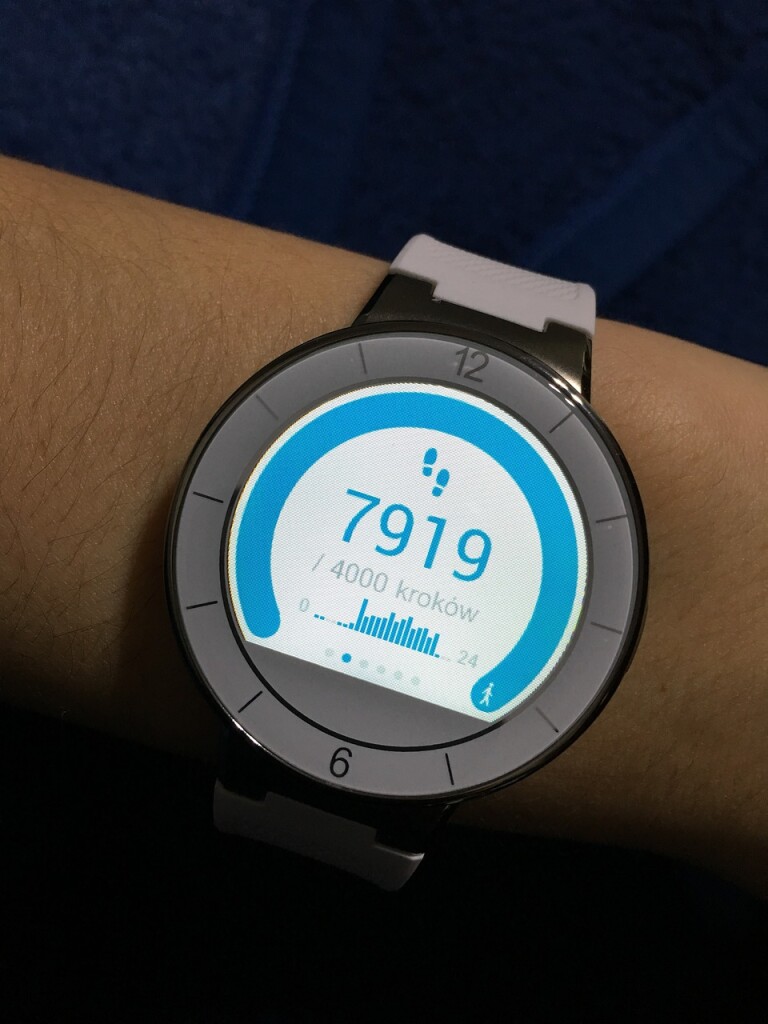 Apple Watch Buying Considerations: Budget, Use Cases and More
Apple Watch Buying Considerations: Budget, Use Cases and More
When deciding which Apple Watch is right for you, consider your budget and how you plan to use it. Do you want a basic model for activity tracking? Or do you prefer a more advanced watch with cellular connectivity? These factors will determine the best Apple Watch for your needs.
Budget
Apple Watches range from $199 to $1,499, so there’s an option for most price points. The Apple Watch Series 3 starts at $199. The mid-range Apple Watch SE retails for $279-$309. The latest Apple Watch Series 7, with an always-on display and faster charging, usually starts at around $399. If budget is a concern, an older model can still work great for basic use.
Use Cases
How do you plan to use your Apple Watch? For fitness tracking, any model will work. But if you want to stream music, use Apple Pay, or get call and text notifications on your wrist, you’ll need a cellular model. Only the Apple Watch Series 3 and newer offer LTE connectivity, starting around $399.
Health and Fitness Focus
every Apple Watch can track steps, heart rate, and workouts. But if health and fitness are your priorities, consider a newer model. The Apple Watch Series 6 and Series 7 offer blood oxygen monitoring and an ECG app to check for signs of atrial fibrillation. The Series 7 also has improved tracking for cycling, rowing, and tai chi.
Display
If you want the largest, brightest display for easier viewing, the Apple Watch Series 7 is your best choice. It has a 20% larger screen than the Series 6 and SE. The Series 3 has the smallest screen, so keep that in mind if you have trouble seeing smaller text or want extra screen real estate.
In the end, choosing the right Apple Watch comes down to comparing models based on your needs and budget. Consider how much you value features like cellular connectivity, health tracking, or a high-end titanium case. With a range of options at varying price points, you’re sure to find an Apple Watch that suits you well.
Which Apple Watch Is Best for Fitness & Health Tracking?
If you’re interested in the Apple Watch for fitness and health tracking, two models stand out: the Apple Watch SE and the Apple Watch Series 7. Both offer advanced fitness and wellness features, so which is right for you?
The Apple Watch SE provides solid fitness tracking at an affordable price. It can track popular workouts like running, walking, swimming, and biking. It also monitors your daily activity and exercise minutes to help you close your activity rings. The SE offers basic heart rate monitoring and irregular heart rhythm notifications. But, it lacks the ECG app and blood oxygen sensor of the Series 7. For casual to moderate exercise, the SE should suit your needs fine at a lower cost.
, the Apple Watch Series 7 is the best choice if fitness and health are top priorities. The Series 7 also tracks activity and workouts. It provides an ECG app to check your heart rhythm. It also has a blood oxygen sensor to measure your oxygen levels. It can detect if your blood oxygen level drops below a healthy range while you’re inactive, which could signal a respiratory or cardiac issue. The Series 7 also has an always-on display so you can glance at your metrics during a workout.
Other factors to consider:
• Battery life – The SE will last around 18 hours on a single charge, while the Series 7 can go up to 36 hours in low-power mode. For overnight sleep tracking or long workout days, the Series 7 has a clear advantage.
Only the Series 7 offers optional LTE connectivity. This allows you to make calls, send messages, and stream music when your iPhone isn’t nearby. Useful for running or biking outdoors.
The Series 7 has extra health features. Also to ECG and blood oxygen tracking, it provides heart rate notifications, fall detection, and emergency SOS. It offers the most comprehensive health monitoring of any Apple Watch.
• Cost – The Apple Watch SE starts at around $279, while the Series 7 starts at $399. If budget is a concern, the SE provides solid core fitness features at a lower price point.
In the end, the Apple Watch model you choose comes down to how serious you are about fitness and health, and how much you’re willing to spend. For the most advanced tracking and monitoring, the Series 7 is your best option. If you’re looking for basic activity and workout tracking at an affordable cost, the SE should work great.
Helpful Tips for Choosing the Right Apple Watch Model
Choosing between the various Apple Watch models can be tricky. Here are some helpful tips to guide you to the right option for your needs and budget.
Consider Your Usage
How do you plan to use your Apple Watch? If you’re interested in fitness tracking, a model like the SE or Series 3 should work great for basic activity and workout monitoring. If you want the latest health features like fall detection or EKG, go for the Series 6. For the tech enthusiast who wants the largest screen and most advanced features, the Series 7 is a solid choice.
Choose Your Size
Apple Watches come in 40mm or 44mm case sizes. The larger size is good for those who want the greatest screen space, while the smaller size may be more comfortable for people with petite wrists. It comes down to personal preference, so try on both sizes if possible to determine which you like better.
Pick Your Connectivity
All Apple Watches can connect to your iPhone, but some models also offer cellular connectivity. Cellular options allow you to receive calls, messages, and stream music when your iPhone isn’t nearby. But, cellular models do cost more and must a more monthly carrier fee. If you don’t need cellular connectivity, you can save money by choosing a model.
Set Your Budget
Apple Watch prices span from $199 up to $399 for the latest Series 7 with cellular. The Series 3 is the most affordable, starting at $199, while the SE offers solid value for under $300. If budget is a concern, don’t feel you need to spring for the latest and greatest model to get a capable smartwatch. An older-generation Apple Watch can still serve you well for a lower cost.
To find the perfect Apple Watch for you, do some self-reflection. Consider how you’ll use your watch, choose the right size for comfort, decide if you need cellular connectivity, and set a budget. Take your time exploring the options—your wrist will thank you!
More Factors to Consider When Comparing Apple Watches
When comparing the Apple Watch models, a few more factors are worth considering beyond price, size, and basic features.
Battery Life
The battery life of the different Apple Watch models can vary quite a bit. The Series 3 lasts 18 hours on a single charge, the SE model up to 2 days, and the Series 6 around 36 hours. If longer battery life is important to you, the SE or Series 6 may be better options. For most people though, charging your watch overnight while you sleep is enough.
Health and Fitness Tracking
All Apple Watch models offer activity tracking, heart rate monitoring, and emergency calling. But, Series 6 also measures blood oxygen levels. It also provides ECG readings for detecting irregular heart rhythms and detects falls. If comprehensive health and safety features matter most, the Series 6 is the only choice. For basic activity and workout tracking though, the other models will work great.
Cellular Connectivity
Only the Series 6 and SE offer cellular models. These models allow you to make calls, send texts, and stream music without your iPhone nearby. If you want the flexibility of leaving your phone at home, the cellular versions provide that convenience. It costs an extra $10 per month. For many though, the models paired with your iPhone are enough.
Special Edition Models
Apple releases special edition Apple Watch models. They collaborate with popular brands like Nike, Hermes, and Pride. These differ, featuring unique watch faces, bands, and sometimes case materials or finishes. Special editions tend to cost a bit more, so only opt for one if the style appeals to you. For most, the standard aluminum models offer a sleek, versatile look at a lower cost.
Conclusion
So there you have it, a full breakdown of the latest Apple Watch options to help you decide which model is right for your needs and budget. At the end of the day, any of these smartwatches will help you stay connected, active, and healthy in style. If you want the latest and greatest with an always-on display and ECG, the Series 5 is a no-brainer. If you’re on a budget or don’t need the latest tech, the Series 3 is still a solid choice. And for the ultimate Apple Watch experience with mobile data and a titanium case, the Edition is the only way to go. Now the only question left is what color watch band you want to pair it with! The world of Apple Watch is your oyster.
Google Pay vs GPay – A Modern Approach to FinTech
Introduction:
In today’s fast-paced world, Financial Technology (FinTech) has become a buzzword. It stands for seamless and secure payment solutions. Google Pay and GPay are two of the most popular digital wallets that have evolved to offer users a fast and efficient payment experience. In this article, we will compare Google Pay and GPay to determine which one suits you best. We will explore their differences, features, and benefits.
Key Takeaways:
- Google Pay and GPay are digital payment solutions. They cater to the evolving needs of modern-day consumers.
- Choosing between the two platforms depends on the user’s needs. It depends on features, transaction limits, user interface, and payment security.
- Both platforms offer robust security features. They also integrate with other apps and services to provide an enhanced user experience.
- Users give positive reviews to Google Pay and GPay. They praise the convenience, reliability, and seamless payment experience.
- , the choice of any digital wallet, including Google Pay and GPay, depends on the user’s unique requirements and preferences.
What is Google Pay?
Google Pay is a digital payment service offered by Google. It is designed to make online and in-store payments quick, secure, and hassle-free. Users can link their credit or debit cards to their Google account using Google Pay. They can then use their phone to pay for purchases without touching their physical wallet.
One of the standout features of Google Pay is its ability to store and organize payment methods, enabling users to manage many accounts. Google Pay also integrates with other Google services. These include Gmail and YouTube. This provides a seamless payment experience across all platforms.
Features of Google Pay:
- Fast and secure payments using NFC technology
- Easy integration with other Google services and devices
- Simple management of many payment methods
- Instant notifications and transaction history
- Support for online and in-store purchases
- Budget tracking and management tools
- Integration with loyalty programs and discounts
Google Pay’s interface and broad range of features make it an attractive digital payment service. It’s suitable for personal and business use. Google Pay sets itself apart from other digital wallet solutions. It integrates with other Google products and services. This integration also creates a distinction.
What is GPay?
GPay is a digital wallet that offers seamless and quick payment options to its users. It allows users to link their bank accounts and credit cards to the app, enabling them to make online transactions with ease.
GPay is known for its unique functionality, which allows users to perform a variety of tasks within the app. Users can view their transaction history, request funds from others, and even split bills with friends and family. Additionally, GPay offers robust security measures to ensure the safety of its users’ information.
One of the standout features of GPay is its ability to integrate with other Google services, such as Gmail and Google Maps. This means that users can send and receive payments without leaving their email or map app. GPay also supports peer-to-peer transactions, allowing users to send money to friends and family with a few taps on their phone.
GPay is a reliable digital wallet solution. It combines convenience, functionality, and safety to provide an excellent user experience.
Unique Functionality of GPay
The app allows users to send and receive payments. They can send money to friends and family, and also receive money from them. Google Pay integrates with other Google services. It can be used within other Google apps, such as Gmail and Google Maps. This makes payments easier and more convenient. GPay enables users to split bills with friends and family. It simplifies the payment process for group expenses. Users can view their transaction history within the app. This helps them keep track of their spending and payments.
GPay’s unique functionality makes it stand out in the digital wallet market. Its robust security measures also contribute to its uniqueness.
Similarities between Google Pay and GPay
Google Pay and GPay share several commonalities. They are top-rated digital payment services in the market. They provide innovative payment solutions. Let’s take a look at some of their shared features and security standards:
Google Pay and GPay accept various payment methods. This includes debit and credit cards. They share security standards. They both use high-level encryption to protect users’ payment information from unauthorized access. They allow users to make contactless payments from their mobile devices. Both platforms support biometric authentication methods such as fingerprint and facial recognition. Users can send and receive money through both Google Pay and GPay. They have implemented fraud prevention measures to prevent fraudulent activities. This ensures secure transactions.
, Google Pay and GPay share many similarities. They provide efficient and secure digital payment solutions. But, their differences highlighted in section 5 will help you decide which one is a better fit for your needs and preferences.
Key Differences between Google Pay and GPay
Both Google Pay and GPay offer similar payment services to their customers. But, some notable differences set them apart from one another.
Transaction Limits
One of the key differences between Google Pay and GPay is their transaction limits. Google Pay offers a higher transaction limit of up to $10,000 per transaction, while GPay has a lower limit of $1,000 per transaction. This may affect users depending on their payment needs.
Supported Platforms
Another difference between the two platforms is their compatibility with different operating systems. Google Pay is available on both Android and iOS devices, while GPay is exclusive to Android devices. This may limit users who use iOS devices.
Integration with Other Apps
Google Pay has a broader range of integrations with other apps and services, making it a more versatile payment solution for users. , GPay has a more limited selection of integrations, which may affect its appeal to certain user segments.
Extra Services
Google Pay offers more services to their users such as the ability to split bills and buy cinema tickets or public transport fares using the app. Gpay does not offer these services. But, it is useful for making simple, quick transactions on both online and physical terminals.
These key differences highlight the diverse range of features and services offered by Google Pay and GPay. Depending on your payment needs, one of these platforms may be better suited to your requirements.
User Interface and User Experience of Google Pay
Google Pay offers a simple and intuitive user interface. This provides users with a hassle-free payment experience. Its minimalist design and well-organized layout make it easy to navigate. This enables users to complete transactions.
One of the standout features of Google Pay is its ability to store payment information within the app. This allows users to make purchases without entering card details. This feature streamlines the payment process, providing an efficient and convenient payment experience.
“Google Pay’s user interface is one of the best out there. The app is easy to use, and I love the fact that my payment information is stored in one place.”
– Sarah, Google Pay user
Additionally, Google Pay offers a range of personalized features. These include transaction tracking and rewards programs, which enhance the user experience.
User Interface and User Experience of GPay
GPay is designed with convenience in mind. It provides users with an intuitive user interface that simplifies the payment process. The GPay app is easy to navigate, making it accessible to even first-time users. The user experience is streamlined. It ensures that users can complete their transactions without confusion.
GPay’s user interface has a standout feature: its Home screen. It allows users to view their recent transactions, payment requests, and saved cards at a glance. With GPay’s design, users can search for contacts and send or receive payments with a few taps on the screen.
The GPay user interface is intuitive and streamlined. It offers an efficient experience. The navigation is easy to use, with a simple home screen. Features include a recent transactions view, payment requests, and saved cards.
, GPay’s user interface and user experience provide users with a seamless and convenient way to send and receive payments.
Security Measures: Google Pay vs GPay
When it comes to digital payments, security is a top priority. Google Pay and GPay both offer robust security features. They protect your financial information from third-party interference. Let’s take a closer look at the security measures offered by both platforms:
Google Pay, or GPay, encrypts financial and personal data to prevent unauthorized access. It also tokenizes sensitive data to safeguard against unauthorized access. GPay uses biometric authentication. This includes fingerprint and face recognition. It ensures that only authorized users can access the account. GPay uses 24/7 fraud detection and prevention measures to prevent unauthorized access. It checks suspicious activity and protects users against fraudulent transactions.
both Google Pay and GPay take security. They offer a range of protective measures to prevent unauthorized access and fraudulent activity. Whether you choose Google Pay or GPay, rest assured that your financial information will be secure.
Integration with Other Apps and Services: Google Pay vs GPay
Both Google Pay and GPay offer integration with various third-party apps and services. This enhances their functionality. Google Pay integrates with popular services such as Airbnb, Netflix, and Uber. This makes it easy for users to pay for purchases without leaving the app they are using. , GPay supports integration with a range of apps, including food delivery services and taxi companies.
Additionally, both platforms integrate with popular shopping apps. This allows users to make purchases without leaving the app. Google Pay also allows users to store loyalty and gift cards, which can be redeemed during a transaction. GPay, allows users to make direct peer-to-peer payments.
, both Google Pay and GPay offer seamless integration with third-party apps and services. This makes it easier for users to complete transactions without leaving the app or service they are using.
User Feedback and Reviews: Google Pay vs GPay
One of the most reliable ways to assess the effectiveness of a digital payment solution is to look at user feedback and reviews. Let us take a deeper dive into what users are saying about Google Pay and GPay.
User Feedback for Google Pay
Google Pay has received positive feedback from users, particularly for its ease of use. One reviewer writes, “Google Pay is amazing! It’s fast, convenient, and works. I no longer worry about carrying cash around.” Another user praises Google Pay for its security measures. They stated, “Safe using Google Pay because my financial information is encrypted and protected.”
User Feedback for GPay
GPay has also received glowing reviews from its users. Many praise its fast and reliable transactions. One user writes, “GPay is so easy to use and always reliable. I can pay for my purchases in seconds, even on the go.” Another user highlights the convenience factor. They state, “I love how GPay integrates with my other apps, making it easy to manage my finances.”
Review of User Feedback
Both Google Pay and GPay have received positive reviews from users. People appreciate the convenience of making payments and the reliability of transactions. They also value the safety measures both platforms provide. But, some users of Google Pay have reported issues with customer support. Besides, some GPay users have noted inconvenience when it comes to setting up the app.
Positive reviews: Easy to use. Google Pay is fast and reliable for transactions. Negative reviews: Issues with customer support. Inconvenient to set up the app.
, both Google Pay and GPay have provided exceptional digital payment options. Users have received them well. Their features, security, reliability, and transaction speed offer users much convenience. Integration with other apps also makes their financial transactions quick and efficient.
Conclusion
After comparing Google Pay and GPay, it is clear that both platforms offer robust FinTech payment solutions. Google Pay is a versatile digital payment service. It provides features such as an intuitive interface and flexible integration with other apps and services. GPay stands out for its unique functionality. It offers seamless payment options and stringent security measures.
, the choice between these two platforms depends on your specific requirements and preferences. Consider the features that are most important to you. Consider the transaction limits, supported platforms, and integration with other apps. These factors are critical to your day-to-day financial operations. Consider them before deciding.
Whether you opt for Google Pay or GPay, the FinTech payment landscape offers innovative payment solutions. They continue to transform the way we make payments. Embrace the convenience and security of digital wallets. Take advantage of the latest technological advancements available to you.
FAQ
What is Google Pay?
Google Pay is a popular digital payment service provided by Google. It allows users to make payments, send money to friends and family, and store loyalty cards and gift cards on their mobile devices.
What is GPay?
GPay is another digital wallet that provides seamless payment options. It offers users a convenient way to make payments, manage their finances, and store their payment information.
What are the similarities between Google Pay and GPay?
Both Google Pay and GPay offer similar features and security standards. They provide secure transactions. They support many payment platforms. They strive to provide innovative payment solutions to their users.
What are the key differences between Google Pay and GPay?
Google Pay and GPay have different transaction limits, supported platforms, integration with other apps, and other services. Google Pay has higher transaction limits and broader integration with third-party apps than GPay.
How are the user interface and user experience of Google Pay?
Google Pay features an intuitive user interface that simplifies the payment process for users. It offers an easy-to-navigate design. It also has seamless integration with other Google services. Plus, it provides a hassle-free payment experience.
How are the user interface and user experience of GPay?
GPay provides users with a unique design and an enhanced user experience. Its user interface is designed to be convenient and, ensure a smooth and seamless payment journey for its users.
What security measures do Google Pay and GPay have in place?
Both Google Pay and GPay rank security and install robust measures to protect users’ sensitive information. They use encryption. They offer biometric authentication. They have advanced fraud prevention systems in place.
How do Google Pay and GPay integrate with other apps and services?
Both Google Pay and GPay have integration capabilities with third-party apps and services. They offer compatibility with various platforms. They form partnerships with merchants. They enhance their integration to provide a seamless payment ecosystem.
What do users say about Google Pay and GPay?
User feedback and reviews for both Google Pay and GPay vary. Users appreciate the convenience and security offered by both platforms. Some may have specific preferences based on their individual experiences. Must consider user feedback and reviews when making a decision.
free Chromecast app for iPhone
Introduction:
Hey there, iPhone user. Did you get a new Chromecast device to stream content to your TV? If so, you’re in luck. Plenty of free Chromecast apps to beam your iPhone’s screen or stream media from popular services to your big screen. You don’t need to feel left out because you’re not on Android. We’ve rounded up the top free Chromecast apps that work with your iPhone. You can get the most out of your new streaming stick. Whether you want to display photos from your camera roll or stream the latest viral videos from YouTube, we’ve got you covered. If you want to binge-watch shows from Hulu, we’ve got you covered too. These free iPhone apps will let you cast to your Chromecast. Sit back and enjoy your content on the biggest screen in the house. No Apple TV is needed.
Introducing Chromecast and How It Works with iPhone
Chromecast is a tiny streaming device from Google that lets you cast content from your iPhone to your TV. Once plugged into your TV’s HDMI port, you can stream music, movies, TV shows, and more straight from your iPhone apps to the big screen.
To get started, download the free Chromecast app on your iPhone. This will walk you through connecting your Chromecast to Wi-Fi and linking it to your Google Account. Then, you’re ready to cast from compatible iPhone apps like:
• Netflix – Stream movies and shows from your Netflix account. tap the Cast button in the Netflix app and select your Chromecast.
• YouTube – Watch YouTube videos, channels, and playlists on your TV. Tap the Cast button in the YouTube app and choose your Chromecast.
• Hulu – Access your Hulu shows and live TV on the big screen. Select the Cast option in the Hulu app and pick your Chromecast.
• Pandora – Play music stations, podcasts, and playlists through your TV speakers. Tap the Cast button in Pandora and select your Chromecast.
• Google Photos – View photos and slideshows from your photo library on the TV. Open the Google Photos app, tap the Cast button, and choose your Chromecast.
• Many more – Additional iPhone apps like HBO NOW, Spotify, NPR One, and thousands more offer Chromecast support. look for the Cast button in the app.
Chromecast provides an easy, affordable way to stream content from your iPhone to your television. Best of all, since Chromecast works with the apps you already know and love, there’s no complicated setup or navigation to learn. You can keep enjoying the same familiar iPhone experience, on a bigger screen.
To summarize, once you have Chromecast set up, you :
- Open a supported app on your iPhone
- Tap the Cast or AirPlay button
- Select your Chromecast device
- Sit back, relax, and enjoy your TV!
Best Free Media Apps for Chromecast and iPhone
Chromecast is a nifty little dongle that plugs into your TV’s HDMI port and lets you stream content from your iPhone and other devices. While some of the best Chromecast apps do cost money, there are also lots of free options for streaming media.
YouTube
YouTube reigns supreme when it comes to free video streaming. Their iOS app allows you to cast any video on YouTube straight to your TV. This includes everything from viral clips to full-length movies and TV shows. tap the cast button and select your Chromecast device.
Netflix
If you already subscribe to Netflix, their iOS app lets you cast shows and movies to your Chromecast-enabled TV. This allows you to binge-watch all your favorite Netflix originals on the big screen. The Netflix app is free to download, you need an active subscription to access content.
Tubi TV
Tubi TV is a free streaming service with thousands of movies and TV shows to enjoy. Everything from action thrillers to romantic comedies and sci-fi adventures. Their iOS app is Chromecast enabled, so you can cast all that free content to your TV. Tubi adds new shows and movies every week, so there’s always something fresh to watch.
Crackle
Another popular free, ad-supported streaming service is Crackle. They feature a curated collection of movies, TV shows, and web originals. Everything from classic films to current hits. Their iOS app allows you to cast anything from their library to your Chromecast. Sony Pictures owns Crackle, so they have a lot of popular Sony content.
Pandora
Pandora isn’t just for streaming music. They also offer podcasts, comedy albums, and other audio entertainment. If you want to listen on your TV instead of just your phone, the Pandora iOS app allows you to cast to Chromecast. Control playback, like songs, skip tracks, and more right from your iPhone.
Between these free apps and more, your Chromecast device can offer plenty of entertainment using just your iPhone. Cast, sit back, and enjoy streaming all your favorite shows, movies, music, and more on the big screen.
Free Chromecast Games You Can Play on Your iPhone
Chromecast is a nifty device that lets you stream content from apps on your iPhone right to your TV. While you probably already use it for streaming video and music, did you know you can also play games on your TV using just your iPhone and Chromecast? Here are some of the best free gaming apps with Chromecast support.
Scrabble GO
The classic word game Scrabble now has an official free app that lets you play on your iPhone and cast it to your TV. Take on random online opponents or challenge friends and family to a battle of words and points. The bigger screen makes it easier to keep an eye on the board and plot your next high-scoring move.
UNO! TM
The popular card game UNO is also available as a free app with Chromecast capabilities. Deal out the colored cards, match numbers and colors, and be the first to get rid of all your cards. You can play with 2-4 people right on your couch using just your iPhones to cast to the TV.
GamePigeon (iMessage games)
GamePigeon lets you play classic party games like 8-ball pool, darts, and sea battles right within your iPhone’s Messages app. Start an iMessage group thread, launch GamePigeon, pick your game, and start casting to your TV for a big screenplay. Up to 8 people can join in on the fun.
Spaceteam
This wacky spaceship adventure game turns your iPhone into a control panel. Use it to guide your spaceship through treacherous space terrain. Each player has a different set of absurdly-named controls. They shout out instructions to the other players before the spaceship crashes. It’s a hilarious party game made even more fun when casting to your TV.
Scattergories
The classic creative word game comes to life on your iPhone and Chromecast. Players get a category and letter, then have to come up with words that start with that letter and fit the category. Get points for unique responses not thought of by other players. Use your wits and sense of humor to dominate this battle of words.
With so many classic and creative games to choose from, you’ll never be bored using your Chromecast for an impromptu game night again. Gather your friends and family, start casting, and let the fun begin!
Top Utility Apps for Controlling Chromecast From Your iPhone
Once you have your Chromecast set up, it’s time to find some useful apps to control it right from your iPhone. Here are some of the top free utility apps that will enhance your Chromecast experience:
Cast for Chromecast
This simple yet powerful app lets you control your Chromecast device directly from your iPhone. You can play, pause, rewind, fast forward, and adjust the volume of content streaming to your TV. It also has a “Now Playing” feature that shows details about the current media playing, like episode info or song titles.
TuneIn Radio
With over 100,000 radio stations and 4 million podcasts, TuneIn is a must-have app for any Chromecast owner. Stream live radio or your favorite podcasts through your Chromecast to enjoy on your TV and home audio system. They offer stations in a wide range of genres like news, sports, music, and talk radio.
Plex
If you have a library of music, movies, TV shows, photos, or other media stored on your computer, the Plex app lets you stream it all to your Chromecast. Plex organizes your media into libraries and fetches descriptions, movie posters, and episode info. This gives you an attractive interface. They have apps for iOS, Android, Windows, and more so you can enjoy your media on almost any device.
YouTube
YouTube on the iPhone comes with built-in Chromecast support to beam videos, music, and more to your TV. Find trending videos. Search for content by category or keyword. Access your uploads, subscriptions, and watch history. With YouTube, there’s no shortage of entertainment options to cast.
Netflix
If you subscribe to Netflix, you can use their iPhone app to cast movies, TV shows, documentaries, and Netflix originals. You can enjoy them on the big screen. Browse through different genres or continue watching where you left off on another device. For the ultimate home theater experience, pair your Chromecast with a surround sound system.
With these free apps at your fingertips, you’ll be casting in no time. You’ll enjoy a world of entertainment, music, news, and more from your iPhone on your TV. Let the binge-watching begin!
Troubleshooting Tips for Using Chromecast and iPhone
Troubleshooting your Chromecast and iPhone setup is often a matter of checking a few common issues. Here are some tips to try if you’re experiencing problems:
Check for software updates
Make sure your Chromecast, iPhone, and any streaming apps are up to date with the latest software versions. Outdated software is a frequent cause of streaming and casting issues. Open the App Store on your iPhone and the Chromecast app on your TV to check for and install any available updates.
Restart your devices
Restarting your Chromecast, iPhone, and Wi-Fi router can refresh network connections. It can also fix many minor software glitches. Unplug each device for 30 seconds and plug it back in. Wait a couple of minutes after the router restarts before reconnecting other devices.
Ensure Wi-Fi connectivity
For Chromecast to work, your iPhone and Chromecast must be connected to the same Wi-Fi network. Double-check that Wi-Fi is enabled on your iPhone and Chromecast. If possible, connect to a 5 GHz Wi-Fi band, which provides a faster, more stable signal than 2.4 GHz. Move your devices closer to the router if the signal seems weak.
Disconnect and reconnect
If you’re still having issues, try disconnecting your Chromecast from the Wi-Fi network and setting it up again from scratch. On your iPhone, open the Google Home app and tap the menu → Settings → Your Chromecasts. Tap on your Chromecast device and select “Factory reset”. Then go through the setup process to connect your Chromecast to Wi-Fi and any streaming apps again. This will clear your device of any software issues and ensure proper reconnection.
Contact support
If troubleshooting on your own doesn’t solve the problem, you may need to contact Apple, Google, or your internet service provider for more help. They can diagnose more complex network issues. They may also be able to access your devices to fix software glitches. This will get you back to streaming your favorite content.
In conclusion,
Our free Chromecast app for iPhone opens up a new realm of entertainment possibilities. It offers a seamless casting experience. With the power to stream content from your iPhone to your TV, this app transforms your viewing habits. Wireless casting enhances your entertainment experience. Whether you’re enjoying movies, videos, or your favorite shows. Take control of your Chromecast device from your iPhone. Elevate your streaming game with the simplicity and features our app provides. Download now to embark on a journey of immersive and convenient entertainment. It integrates with your iPhone.
